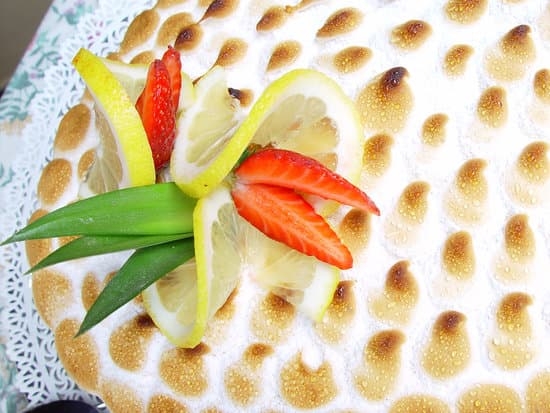Marzipan is a versatile and delicious ingredient that can elevate the appearance of any cake. If you’re wondering how to use marzipan for cake decorating, you’ve come to the right place. Marzipan is a sweet almond paste commonly used in confectionery and baking, especially for decorating cakes. Its pliable texture makes it ideal for sculpting intricate designs and adding intricate details to your creations.
Dating back to medieval times, marzipan has a rich history and cultural significance in various regions around the world. While store-bought marzipan is readily available, many bakers prefer making their own homemade version to control the quality and flavor of the final product. Understanding the differences between store-bought and homemade marzipan can help you choose the best option for your cake decorating projects.
Whether you’re a beginner or an experienced baker, knowing how to prepare marzipan from scratch is essential. From gathering the right ingredients to following step-by-step instructions, mastering the art of making marzipan will open up a world of creative possibilities for your cake decorations. Stay tuned as we delve deeper into tips for working with marzipan, techniques for shaping and coloring, as well as creative ideas for using this versatile ingredient in your cake decorating endeavors.
History of Marzipan
Marzipan, a sweet confection made from almond paste, has a rich history that dates back to ancient times. The origins of marzipan can be traced back to the Middle East, where it was believed to have been used for medicinal purposes due to its high almond content. Over time, marzipan spread throughout Europe, particularly in countries like Spain, Italy, and Germany, where it became a popular treat enjoyed during special occasions such as weddings and holidays.
The cultural significance of marzipan varies across different regions. In Spain, especially in the city of Toledo, marzipan is deeply rooted in tradition and is often associated with religious festivals like Christmas and Easter. In Germany, particularly in the city of Lübeck, marzipan holds a special place in confectionary history as it is known for producing high-quality marzipan products using traditional methods.
When it comes to cake decorating, understanding the history and cultural significance of marzipan can provide inspiration for incorporating this versatile ingredient into your creations. Whether you’re looking to create a classic design that pays homage to its origins or putting a modern twist on traditional techniques, the possibilities are endless when using marzipan. Below are some ideas on how to use marzipan for cake decorating:
- Create intricate designs by molding and sculpting marzipan into various shapes and figures
- Experiment with different coloring techniques such as painting or airbrushing to achieve vibrant hues
- Use embossing tools or molds to add texture and dimension to your marzipan decorations
Overall, exploring the history and cultural significance of marzipan can not only enhance your cake decorating skills but also allow you to appreciate this beloved confection in a new light. By embracing the versatility and creativity that marzipan offers, you can elevate your cakes to new heights and impress both friends and family with your edible works of art.
Types of Marzipan
Marzipan, a sweet almond paste widely used in cake decorating, comes in two main varieties: store-bought and homemade. Each type has its own unique qualities that can influence the final outcome of your cake decorations. Understanding the key differences between store-bought and homemade marzipan can help you choose the best option for your specific needs.
Store-bought marzipan is a convenient option for those who want to save time and effort in the kitchen. It is readily available in most grocery stores and baking supply shops, making it easily accessible for amateur bakers and professionals alike. Store-bought marzipan typically comes pre-made and ready to use, allowing you to skip the step of preparing the paste from scratch.
On the other hand, homemade marzipan offers more control over the ingredients used and allows for customization based on personal preferences. By making your own marzipan, you can adjust the sweetness, texture, and flavor to suit your taste preferences. Additionally, homemade marzipan provides a sense of satisfaction and accomplishment that comes from creating something from start to finish.
When deciding between store-bought and homemade marzipan for cake decorating, consider factors such as time constraints, desired level of customization, and overall flavor profile. Both types have their own advantages and strengths, so experimenting with both options can help you determine which works best for your specific cake decorating projects. Whether you choose store-bought or homemade marzipan, knowing how to use marzipan for cake decorating will elevate your creations to new heights of artistry and deliciousness.
How to Prepare Marzipan
Marzipan is a versatile and delicious ingredient that can take your cake decorating to the next level. It is made from ground almonds, sugar, and sometimes egg whites, giving it a smooth and malleable texture perfect for shaping and molding. If you are looking to explore how to use marzipan for cake decorating, learning how to prepare it from scratch is essential.
Ingredients Needed
To make your own marzipan at home, you will need almonds (either whole or ground), powdered sugar, almond extract for flavoring, and possibly corn syrup or egg whites to help bind the mixture together. The ratios may vary depending on the recipe you choose to follow, but a basic marzipan recipe typically calls for equal parts ground almonds and powdered sugar mixed with a small amount of liquid such as water or almond extract.
Step-by-Step Instructions
- Begin by mixing together your ground almonds and powdered sugar in a bowl. Make sure they are well combined before adding in any liquid ingredients.
- Add in your preferred liquid slowly while mixing continuously until the mixture comes together into a smooth dough-like consistency.
- Knead the marzipan on a clean surface dusted with powdered sugar to prevent sticking. Continue kneading until it becomes pliable and easy to work with.
- Your homemade marzipan is now ready to be used for cake decorating. Roll it out thinly using a rolling pin and drape it over your cake or shape it into intricate decorations using molds or hand sculpting techniques.
Making your own marzipan from scratch allows you to customize the flavor profile and texture based on your preferences. Experiment with different variations of the traditional recipe by adding in spices such as cinnamon or nutmeg, or using alternative sweeteners like honey. With these step-by-step instructions, you’ll be well on your way to mastering how to use marzipan for cake decorating like a pro.
Tips for Working With Marzipan
When it comes to cake decorating, marzipan is a versatile and popular choice due to its pliability and ability to hold intricate shapes. Understanding the proper techniques for working with marzipan can make all the difference in achieving professional-looking results on your cakes. One key aspect in utilizing marzipan effectively is knowing how to shape and color it to bring your creative visions to life.
Shaping Techniques
To shape marzipan for cake decorating, start by kneading it until it becomes soft and pliable. This will make it easier to work with and mold into various designs. You can use simple tools like cookie cutters or molds to create uniform shapes, or opt for hand modeling for more intricate details. Remember to work quickly as marzipan can dry out fast.
Coloring Tips
Adding color to marzipan is a fun way to customize your cake decorations. You can use gel food colors or powdered food coloring specifically designed for fondant and marzipan. Start with small amounts of color and knead the marzipan until the desired shade is achieved. If you need multiple colors, divide the marzipan into portions before coloring each one separately.
Textures and Effects
Experimenting with different textures and effects can elevate the look of your marzipan decorations. Try imprinting patterns onto the surface using textured rolling pins or silicone mats. You can also create realistic finishes like wood grain or stone by using various tools such as sculpting tools or toothpicks. Adding edible luster dust or edible glitter can provide a shimmering effect to your creations.
By mastering these techniques for shaping, coloring, and adding textures, you’ll be well-equipped to use marzipan for cake decorating in a creative and effective way that will impress both yourself and others at any special occasion or celebration.
Creative Cake Decorating Ideas Using Marzipan
Marzipan is a versatile ingredient that can be used in a variety of creative ways when it comes to cake decorating. One popular method is sculpting marzipan into different shapes and figures to adorn cakes with intricate designs.
To do this, start by kneading the marzipan until it is soft and pliable, then use your hands or shaping tools to mold it into the desired shape. Whether you want to create flowers, animals, or even miniature objects, marzipan allows for endless possibilities in cake decoration.
Another fun technique for using marzipan in cake decorating is modeling. This involves creating three-dimensional decorations such as bows, ribbons, or borders to add depth and dimension to your cakes. To model with marzipan, simply roll out the marzipan into thin strips or sheets and use a sharp knife or modeling tools to cut and shape it as desired. The flexibility of marzipan makes it easy to work with and perfect for creating intricate details on your cakes.
In addition to sculpting and modeling, molding is another creative way to utilize marzipan for cake decorating. Molding involves pressing marzipan into silicone molds or formers to create unique shapes and patterns that can be easily applied to cakes. You can use different colored marzipan or dusts to enhance the designs further and make your cakes truly stand out. Experiment with various molds and textures to unleash your creativity when using marzipan for cake decoration.
| Technique | Description |
|---|---|
| Sculpting | Mold soft and pliable marzipan into different shapes like flowers, animals, or objects by hand or with shaping tools. |
| Modeling | Create three-dimensional decorations such as bows, ribbons, or borders by cutting and shaping rolled-out marzipan. |
| Molding | Press marzipan into silicone molds to create unique shapes that can be easily applied onto cakes for added texture. |
Troubleshooting Common Marzipan Cake Decorating Issues
Marzipan is a versatile ingredient that can be used in various ways for cake decorating, from creating intricate designs to covering an entire cake. However, when working with marzipan, some common issues may arise, such as cracking, drying, and sticking. Understanding how to troubleshoot these problems can help ensure a successful decorating process.
One common issue when using marzipan for cake decorating is cracking. Cracking can occur when marzipan becomes too dry or if it is rolled out too thin. To prevent cracking, it is essential to knead the marzipan well before using it and to ensure that it is pliable and smooth. If you notice cracks forming while working with the marzipan, try gently smoothing them out with your fingertips or a small amount of water.
Another common problem that decorators encounter with marzipan is drying. Marzipan can dry out quickly, especially in warm or dry environments. To prevent your marzipan from drying out while working with it, keep it covered with plastic wrap or a damp cloth when not in use. Additionally, if you find that your marzipan has become too dry and difficult to work with, try kneading in a small amount of vegetable shortening or glycerin to soften it.
Sticking can also be an issue when using marzipan for cake decorating. Marzipan has a naturally sticky texture, which can make it challenging to work with at times. To prevent sticking, lightly dust your work surface and rolling pin with powdered sugar or cornstarch before rolling out the marzipan.
This will help prevent the marzipan from adhering to the surface and make it easier to shape and mold. With these troubleshooting tips in mind, you can overcome common marzipan decorating issues and create beautiful cakes with ease.
| Common Issue | Troubleshooting Tip |
|---|---|
| Cracking | Knead the marzipan well before use and smooth out cracks with water |
| Drying | Keep marzipan covered with plastic wrap or add vegetable shortening/glycerin if too dry |
| Sticking | Dust work surface with powdered sugar/cornstarch before rolling out the marizpan |
Marzipan Cake Decorating Inspiration
Marzipan cake decorating offers endless possibilities for creating stunning and unique cakes that are not only visually appealing but also delicious. Whether you are a beginner or an experienced baker, using marzipan for cake decoration can take your creations to the next level. From elegant wedding cakes to whimsical birthday cakes, marzipan can be shaped, molded, and colored to bring your creative vision to life.
One way to showcase the versatility of marzipan in cake decorating is by creating intricate flower designs. Marzipan can be rolled out thinly and cut into various shapes to create delicate petals for roses, daisies, or any other flower of your choice. By layering these petals and adding details with food coloring, you can make realistic and stunning floral decorations that will impress your guests.
Another popular technique for using marzipan in cake decoration is sculpting 3D figures and characters. With just a little patience and practice, you can mold marzipan into adorable animals, cartoon characters, or anything else you can imagine. By adding small details with edible markers or dusts, you can bring these figures to life on top of your cake. The only limit is your imagination when it comes to using marzipan for cake decorating.
Conclusion
In conclusion, marzipan is a versatile and delicious ingredient that can elevate the visual appeal of cakes through its use in decorating. From its origins in ancient cultures to its modern-day applications, marzipan has been a staple in cake decoration for centuries. Whether you choose store-bought or homemade marzipan, the key lies in how to use marzipan for cake decorating effectively to achieve stunning results.
By following the step-by-step instructions on preparing and working with marzipan, as well as utilizing techniques for shaping, coloring, sculpting, modeling, and molding, you can unleash your creativity and bring your cake decorating visions to life. However, it is essential to be aware of common issues such as cracking, drying, and sticking when working with marzipan and know how to troubleshoot them effectively.
As showcased in a variety of stunning marzipan-decorated cakes, the possibilities are endless when it comes to using this versatile ingredient in cake decorating. Whether you are a beginner or an experienced baker, experimenting with different creative ideas and designs using marzipan can result in truly impressive and visually striking cakes that will impress any audience. So go ahead, have fun exploring the world of marzipan cake decorating and unleash your artistic potential.
Frequently Asked Questions
How Do You Stick Marzipan to Cake?
To stick marzipan to a cake, you can use apricot jam or warmed honey as an adhesive. Simply brush a thin layer of jam or honey on the cake’s surface before placing the marzipan on top. This will help it adhere securely without slipping.
Do You Wet Marzipan Before Icing?
It is not necessary to wet marzipan before icing a cake. In fact, doing so may make the marzipan soggy and difficult to work with. As mentioned earlier, using apricot jam or honey as an adhesive between the cake and marzipan is sufficient for sticking it in place.
Can You Decorate a Cake With Marzipan?
Marzipan is a versatile medium that can be used to decorate cakes in various ways. You can roll out marzipan and cut it into shapes to create intricate designs like flowers, leaves, or other decorations.
Additionally, you can color marzipan with food coloring to achieve different hues for decorating purposes. Its pliability and ability to hold shape make it ideal for creating decorative elements on cakes along with providing a delicious almond flavor.

Welcome to our cake decorating blog! My name is Destiny Flores, and I am the proud owner of a cake decorating business named Cake Karma. Our mission is to provide delicious, beautiful cakes for all occasions. We specialize in creating custom cakes that are tailored specifically to each customer’s individual needs and tastes.





